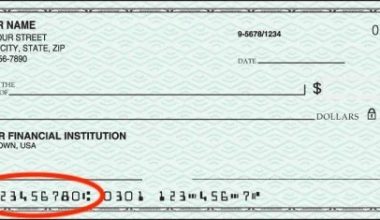It’s essential to know how much it cost to file for a patent and why you should work with a lawyer. People often make mistakes when they try to get a patent or pay the fee for one on a name, product, idea, or mobile app. But we will talk about how much it cost to patent a name, idea, product, or app, as well as the most common mistakes to avoid.
How Much Does a Patent Cost
For a patent filing, a patent attorney will usually charge between $8,000 and $10,000, but the price can be higher. Most of the time, you should spend between $15,000 and $20,000 to get your idea patented.
A patent protects an idea, name, or product( mobile app), and the cost of the process to get the patent depends on the type of patent (provisional, non-provisional, or utility) and the complexity of the invention. Meanwhile, it is of great importance you understand what you can or cannot patent.
#1. What Can You Patent
Your invention must be
- New – it means that it hasn’t been made public anywhere in the world. For example, it can’t have been written about in a book.
- Inventive – It can’t be a clear change to something that already exists.
- Either something that can be made and used, a technical process, or a way to do something.
#2. What You Cannot Patent
Things you cannot patent include:
- works of literature, theater, music, or art
- a way to make money, play a game, or think
- a way to treat or diagnose a patient
- a new idea, theory, or method in science or math
- how information is put together
- “basically biological” things like crossing animals or different types of plants.
- Software that does something “not technical” (A license can only be given to software that has a technical use. A license could be given to software that controls a car that doesn’t need a driver, but it couldn’t be given to an app that plays chess. If your idea is software, you may need help from a professional (like a patent attorney) to figure out if you can patent it.)
How Much Does a Patent Cost for a Name
By filing a patent for your business name with the U.S. Patent and Trademark Office (USPTO), plus lawyer fees, will cost between $225 and $600. If you don’t want security outside of your state, you can register with most states for $50 to $150.
Trademark protection covers the designs, images, words, or phrases that make your business’s goods or services stand out from those of your competitors. Trademarks can be used to protect business names, designs, and labels. If your business sells services instead of goods, you should use the term “service mark” instead of “trademark.” However, most people use “trademark” when talking about both goods and services.
#1. Federal Trademark Information
Note: Each application is for one type of business. If your business sells both pictures and posters, for example, you may have to pay the following fees more than once.
E-file fees: You can use the Trademark Electronic Application System (TEAS) to file your federal trademark online at the USPTO website. The fee for a normal TEAS is $400, but the fee is only $275 if you can use the TEAS Reduced Fee (TEAS RF) form. If your application is easy, you might only have to pay $225 to use the TEAS Plus form.
Paper filing fees: It costs $600 more to file a paper form with the USPTO.
Legal fees: Most lawyers will charge between $500 and $2,000 to look for a business name and file your trademark.
#2. State Trademark Information
Most businesses choose protection at the federal level, but if your business is very local, you might be happy with just a state brand.
Corporations and LLCs: When you register your business name with the state, you are also registering your business organization. Fees to start a corporation or limited liability company vary by state, but are generally less than $150.
For sole proprietors and partnerships, registering a “fictitious name” form with the state, county, or city also registers the company name. Costs vary by area, but usually range from $50 to $150.
When a company’s name is identical to its legal name, no additional registration is required. The Secretary of State is the one to see if you seek a trademark on the state level. The filing process will take longer and cost more money if you haven’t begun doing business under the name you want to preserve.
The USPTO will let you know about your application about 12 weeks after you send it in. Then, you have six months to either file a Statement of Use with a $100 fee and proof that you’ve started using the business name, or you can ask for a six-month extension if you haven’t started doing business yet. If you hire an attorney, you will also have to pay legal fees to make the statement and show proof that you are using the name. The fees for the lawyer run from $250 to $700.
How Much Does a Patent Cost for a Product
It’s important to know how much it will cost you when filling for a patent for your name or ne product (app) and why you should work with a lawyer. You can protect an idea in two ways. The first is to write and file your own claim, which costs about $900 to the United States Claim and Trademark Office. The second way is to pay an attorney or a patent agent to fill out the forms and send them to the right places. Most of the time, the legal fees cost between $5,000 and $10,000.
Utility patents are the most common kind of patent, and most of the cost comes from paying an agent to prepare the application. The process of getting a patent is thorough and takes a long time, so most people think it is worth the cost.
How Much Does a Patent Cost for an Idea
To even be able to patent a creation, you need a unique idea or technology that doesn’t already exist. Also, the law about what makes an invention special keeps getting more complicated.
How much the patent will cost in the end depends a lot on how you make the idea. Among other things:
- Costs for attorneys
- The invention’s marketability
- What you want to do with the patent
- Geographical application of the patent
If the patent can be sold, you should expect to pay more to fill it since you want to make sure you get a good patent out of the application.
Individual inventors typically come up with somewhat simple to moderately difficult innovations. The vast majority of electronic devices fall somewhere in the middle. Because of the inherent complexity of most software inventions, patent applications typically require a great deal of specific technical description. Ideas in the fields of biology and software development typically do not result in tangible products.
Unfortunately, in every industry, only 3% of patents bring in more money than they cost to get. This number should make people and businesses think twice before they try to protect something.
#1. Non-Provisional Patent Application
To get a license, you need to fill out these forms. A non-provisional patent filing can cost anywhere from $5,000 to more than $15,000.
#2. Intellectual Property
When a person or company wants to protect intellectual property, they should set aside more money for the cost of the application. You need a broad patent to protect your idea, or you could lose money from backers.
How Much Does a Patent Cost for an App
The process of getting a Patent for a product can cost you much and lengthy. However, you can have control over the cost of mobile apps (iPhone, Android, web, etc. The provisional patent application secures a filing date (priority date) and lets you explore the market without worrying about competitors racing you to the patent office. The provisional patent application is a time-saver that ensures your patent office spot.
#1. Provisional Patent Application
While each application is unique, a typical provisional patent application for a mobile app may cost between $3,000 and $6,000 to prepare and file (plus the USPTO filing fees of $70 or $140 depending on whether the customer qualifies as a micro entity or small entity). The $3,000 application is a minimally viable application that secures your filing date for the invention’s core. The $6,000 application is usually better developed and provides a firmer foundation for the non-provisional. If we deal with you at both provisional and non-provisional stages, the provisional cost is credited against the non-provisional cost.
Launch the software in the software store, Android Market, or another distribution channel to test the market after filing the provisional application. The provisional patent application preserves your priority date for one year, so you can wait 6–9 months to observe how well the app does before deciding to continue the patent process. The app’s performance can help you decide whether to invest in a non-provisional patent application.
#2. Non-provisional Patent Application
The non-provisional patent application is needed to commence the patent office’s examination of the patent application. It requires claim sets, formal drawings, and a higher filing fee. While each application is unique, a typical non-provisional patent application for a mobile app may cost $12,500 to $17,500 to prepare and file (plus the USPTO filing fees of $430 or $785, depending on whether the customer is a micro-entity or a small entity). As mentioned before, when we prepare the provisional patent application for you, we credit the cost against the non-provisional. The “full” non-provisional application starts the USPTO process.
The non-provisional patent application is examined after filing. Patent application examination is the wildcard. Exams can take one to three years. Patent applications typically wait months or years for an evaluation. The examiner will scan existing patents and patent applications for references to your name, product and idea when they receive the application. The examiner will discover the most relevant references and issue an office action granting or denying the patent. You can then revise and argue to address the examiner’s concerns. The complexity of the arguments and modifications may cost several thousand dollars per answer.
Note:
The patent examiner often provides notice of permission after multiple denials. The examination procedure typically costs $5,000 to $15,000 over 2-3 years, depending on the number of rounds and response complexity. At this stage of the patent procedure, your mobile app/tech product will have been on the market for a while, so you can confidently decide if it is worth paying the cost.
After the patent office approves the patent application, you must pay the USPTO issue fee (usually under $1,500, including legal fees) to issue the patent. Following that, the only patent payments will be maintenance fees at 4, 8, and 12 years following issuance. Small entity maintenance costs $800 (4 years), $1,800 (8 years), and $3,700 (12 years).
Overall, a patent for a common mobile app may cost $20,000 to $30,000 over 3-5 years, with maintenance fees added over 12 years. As mentioned, patenting a mobile app can be long, complicated, and expensive. As you can see, the patent application procedure allows you to stage fees over multiple years while investigating product value in the market. This lets you estimate the patent’s worth during the patent procedure.
How Much Does a 1 Year Patent Cost?
Costs for utility patents vary from company to company, but they are usually between $7,000 and $20,000 in total. Usually, it costs between $5,000 and $10,000 to write and file an application for a utility invention.
Do Patent Owners Make Money?
A patent is a very important piece of paper that says who owns an idea. But just having a patent won’t bring in any money for the creator. To make money off of your idea, you must either sell the patent, let someone else use it, or sell the product yourself.
How Much Does a 20 Year Patent Cost?
The utility patent is good for 20 years from the date the first application was filed, and upkeep fees are due every few years. 3.5 years – $980. 7.5 years – $2,580. 11.5 years – $4,110.
Why Do Patents Cost So Much?
The cost for a patent vary on a number of things, like how complicated the invention (app) is, how good the work is, and how many times you have to go back and forth with the intellectual property office. However, government fees include the cost of applying for a patent and the cost of keeping the patent for the product up to date each year.
How Much Is a Worldwide Patent?
If you have already filed a full patent application, the cost of a worldwide patent (or PCT) is $3500. It is very important because it gives the inventor the exclusive right to make, use, or promote his or her creation, as well as the right to license and promote it to others who will also make, use, or promote it.
Reference
#1. upcounsel
#3. Bitlaw
Related Article
- HOW TO PATENT A NEW NAME: Free Tips & What You Need to Know
- TRADEMARK VS COPYRIGHT: Everything You Need to Know!!!
- PROVISIONAL CREDIT EXPLAINED !!! Best 2023 Practices
- HOW TO PATENT AN IDEA LEGALLY: Comprehensive Guide
- LAWYER SALARY: Average Salaries By State, Experience & Field of Practice (Updated!)
- BEST FAST FOOD PLACES: Best Resturants to Eat or Work in 2023






